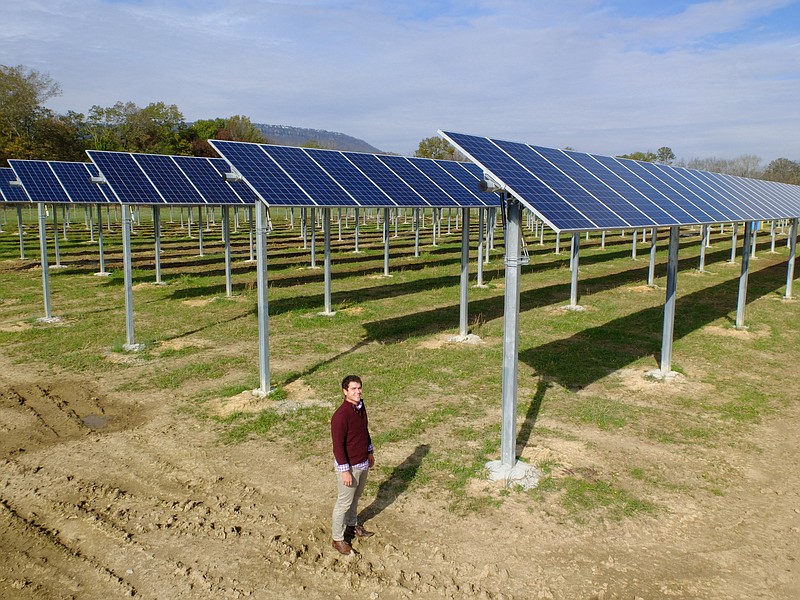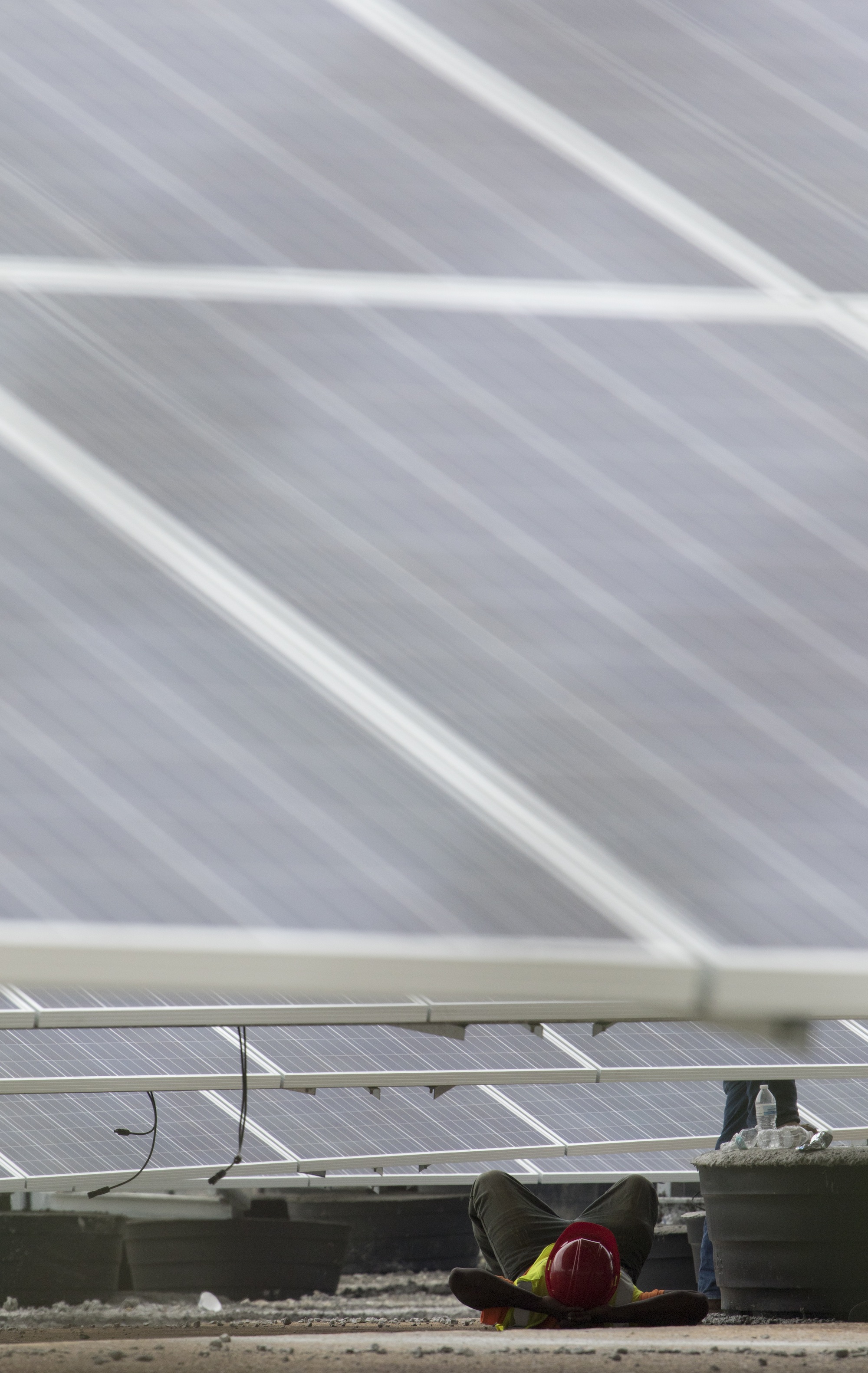The Southeast United States is increasingly being powered by the sun with solar power generation expected to triple in the next five years, according to a new study by the Southern Alliance for Clean Energy.
But the environmental group claims the Tennessee Valley Authority is not keeping pace with its peers, especially utilities in North Carolina, Georgia and Florida.
"Solar in the Southeast has been virtually doubling every year since 2012," said Dr. Stephen Smith, executive director of the Southern Alliance for Clean Energy. "We've seen significant investments and significant leadership by a number of utilities and this is a great economic development tool to create jobs and to attract businesses interested in clean energy."
But Smith said TVA, which was an early leader in small-scale, distributed solar, got less than 40 percent as much from solar power last year as the average of all electric utilities in the Southeast. TVA's projected growth in solar also is not as much as in neighboring states where state legislation and utility regulators are pushing for more solar generation.
"Looking at the low performance path that TVA is currently on, coupled with their current rate change process that further undercuts solar development in their service territory, it is clear that TVA will need a serious course correction to avoid being in last place in the region," Smith said.
But TVA officials said Tuesday the federal utility remains committed to adding more renewable energy, which already accounts for more than 10 percent of TVA's generation due to its network of 29 hydroelectric dams and its purchases of both wind and solar generated power.
TVA spokesman Jim Hopson said TVA has nearly 500 megawatts of solar power under contract, including 70 megawatts added at its Riverbend facility built by NextEra Energy Resource in Alabama.
"We recently added 3,000 solar panels to the new Allen Combined Cycle Natural Gas plant (in Memphis) and have an additional 50-plus megawatt facility under construction just north of Memphis," Hopson said. "We've also recently issued a request for proposal for up to 200 additional megawatts of solar energy."
TVA President Bill Johnson said the utility plans to invest at least $8 billion over the next 20 years in renewable energy.
Additionally, local power companies such as Chattanooga's Electric Power Board recently completed a community solar array and the Nashville Electric Service is expected to break ground on a similar facility on Monday.
Johnson said TVA is required by the TVA Act to supply power at the lowest feasible cost. While renewable energy has come down in price, it is often not the lowest cost alternative. Solar also is an intermittent power source, only available when the sun is shining and the wind is blowing.
"Our customers have rooftop solar panels and they are also doing community solar and I expect there will be more of that," Johnson told reporters following a TVA board meeting in Chattanooga this month. "But our prime directive is delivering power at the lowest feasible rate."
Johnson said other utilities are doing more solar "because those are regulated states and in their regulations, they have either a requirement or an opportunity to do these programs and make money.
On Monday, Georgia Power announced that First Solar will begin developing and building the largest standalone PV solar plant in the southeastern United States near Warner Robins, Ga. Once completed, the 200 megawatt plant is expected to generate more than 450 gigawatt hours of electricity each year.
"Recently completed large-scale solar projects across Georgia are serving customers today, and the Twiggs County project will be the latest addition, allowing Georgia Power customers to benefit from cost-effective, competitive solar as part of our diverse generation mix," said Wilson Mallard, director of renewable development for Georgia Power.
Environmental critics of TVA contend the federal utility isn't giving enough credit for the stable and green value of solar power, which doesn't increase in costs due to fuel expenses and doesn't create the pollution problems of coal, gas or nuclear power plants which can leave costly legacy cleanup expenses even after the plants quit generating power.
In its newest newsletter, the Southern Alliance for Clean Energy blasts TVA for lagging its peers in the Southeast in building, buying and promoting solar power. The environmental group says TVA, Santee Cooper and Seminole Electric "thus far failed to recognize this new economic reality for solar.
"These utilities operate in a public policy vacuum and the slow pace of solar reflects outdated thinking within the utility's management," said Bryan Jacob, the solar program director for SACE.
The SACE study projects solar generation in the Southeast will grow to 10,000 megawatts by 2019 and to 15,000 megawatts by 2021. TVA, which got 82 watts per person from solar generation last year, is projected to get 125 watts per customer from solar by 2021.
Contact Dave Flessner at dflessner@timesfreepress.com or at 757-6340.
Is TVA shaded from solar growth?
The Tennessee Valley Authority has installed less than 40 percent as much solar power as the average utility in the Southeast.1. Duke Energy Progress, 1,117 watts of solar generation per customer2. Duke Energy Carolinas, 474 watts of solar generation per customer3. South Carolina Electric & Gas, 182 watts of solar generation per customer4. Oglethorpe Power, 162 watts of solar generation per customer5. North Carolina Electric Co-Op, 134 watts of solar generation per customer6. Florida Power & Light, 109 watts of solar generation per customer7. Tennessee Valley Authority, 82 watts of solar generation per customer8. Duke Energy Florida, 65 watts of solar generation per customer9. Tampa Electric, 37 watts of solar generation per customer10. Seminole Electric Co-Op, 17 watts of solar generation per customer11. Santee Cooper, 14 watts of solar generation per customer12. Alabama Power, 7 watts of solar generation per customerSource: “Solar in the Southeast,” Southern Alliance for Clean Energy

